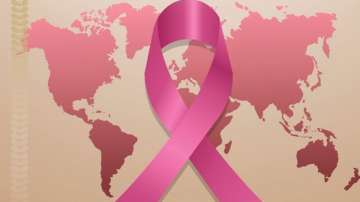Pain is a distressing factor that almost all cancer patients experience. There are two scenarios where a cancer patient may experience pain – a) when a cancer is metastasizing, or spreading to other parts of the body and presses against a nerve in the process, or b) even if the cancer is small in size, it is pressing on a nerve or spinal cord, causing pain. Patients who have successfully completed their treatment may also experience pain after surgery or radiotherapy while some may face it as a long-term side effect of chemotherapy. Not all cancers cause pain, even if they cover a large area. It is thought that about 3 to 6 out of every 10 people with cancer, i.e., 30 to 60 per cent of people with cancer, face some form of pain. Pain is more likely in patients with advanced cancer, i.e., the cancer has spread or come back since it was first treated. Some studies indicate that up to 9 out of 10 people with advanced cancer, i.e., a whopping 90 per cent patients of advanced cancer experience pain.
Defining cancer pain
Cancer patients can come across either chronic or acute pain. Acute pain is more common in cases of cancer surgery and tends to only last a short time during which painkillers keep it under control. Chronic pain is more persistent in nature and can be due to changes to the nerves if the cancer is pressing on nerves or due to chemicals that a tumor produces. Nerve changes due to cancer treatment, long after it is over, can also cause chronic pain which can range from mild to severe. Sometimes pain can set in quickly – for example, when you have a dressing changed or you move around and change position – and is known as incidental pain. Following are a few types of cancer pain:
- Nerve pain: Also known as neuropathic pain, it is caused by pressure on nerves or the spinal cord, or by damage to the nerves. It is described as a sense of burning, tingling, shooting or a feeling of crawling under the skin. Cancer treatments, such as radiotherapy, chemotherapy or surgery can cause this.
- Bone pain: This type of pain happens when cancer spreads into the bone and damages the bone tissue. Such cancers can affect one specific area of bone or several areas. The aching, dull or throbbing pain is also known as somatic pain.
- Soft tissue pain: It refers to pain that generates from a muscle or an organ. Described as cramping, sharp, aching, or throbbing sensation, it is also known as visceral pain.
- Phantom pain: When a part of the body is removed as part of cancer treatment, such as removal of breast through mastectomy, or limbs amputation it can cause a sense of pain in the person for some time after the removal. An estimated 50 per cent cancer patients who have surgery to remove an arm or leg and about 1 in 3 women who have surgically removed a breast feel phantom pain.
Treating cancer pain
The one experiencing pain is the best person to help the doctor in understanding the pain. Mindful patients must note the following in order to do so:
- Location of pain and if it is in one place or spread over an area.
- How does the pain feel – aching, burning, etc.
- What helps to lessen it – hot or cold, changing position, massage, etc.
- How often you feel pain – always or intermittently.
- Describing the onset – sudden or gradual.
There are medicines to treat pain that cancer patients experience. They can be administered in various ways, including oral, injectable, absorption through the skin inserting medication into the rectum, as well as advanced means such as inserting a pump into the space around the spinal cord. For acute pain after surgery and some chronic pain problems, temporary nerve blocks, also known as neural blockades, can provide short-term relief. For more widespread pain, advanced treatments of epidural (the space just outside the spinal cord’s outer membrane) or intrathecal (the space between the sheaths covering the spinal cord) pumps are available that are either carried in a pouch or placed under the skin to deliver medicines continuously. Providing psychological help such as short-term psychotherapy and cognitive-behavioural therapy to cancer patients can also help cancer patients relieve pain.
(By- Dr. Arun Giri, Director – Surgical Oncology, Aakash Healthcare & Super Speciality Hospital)
